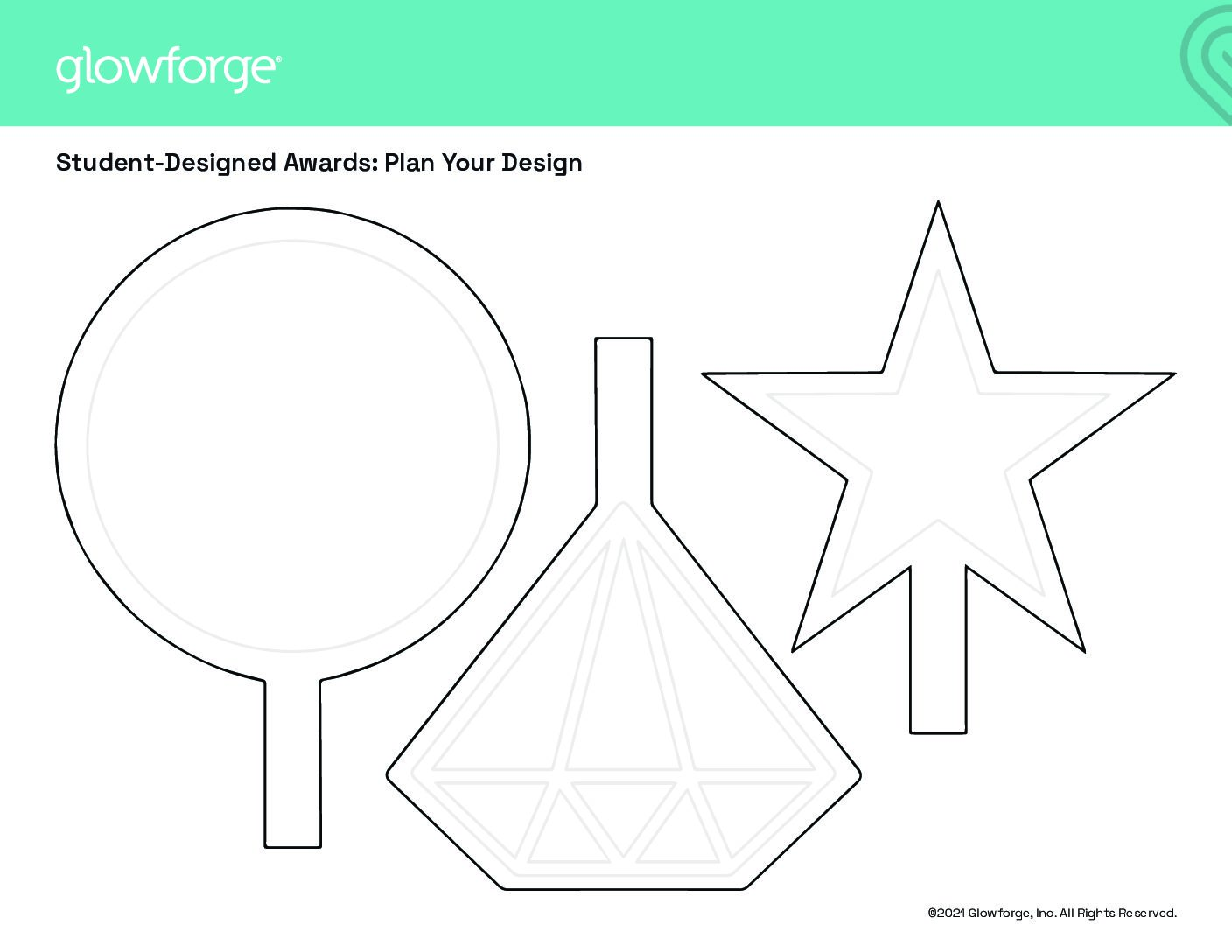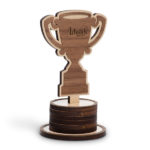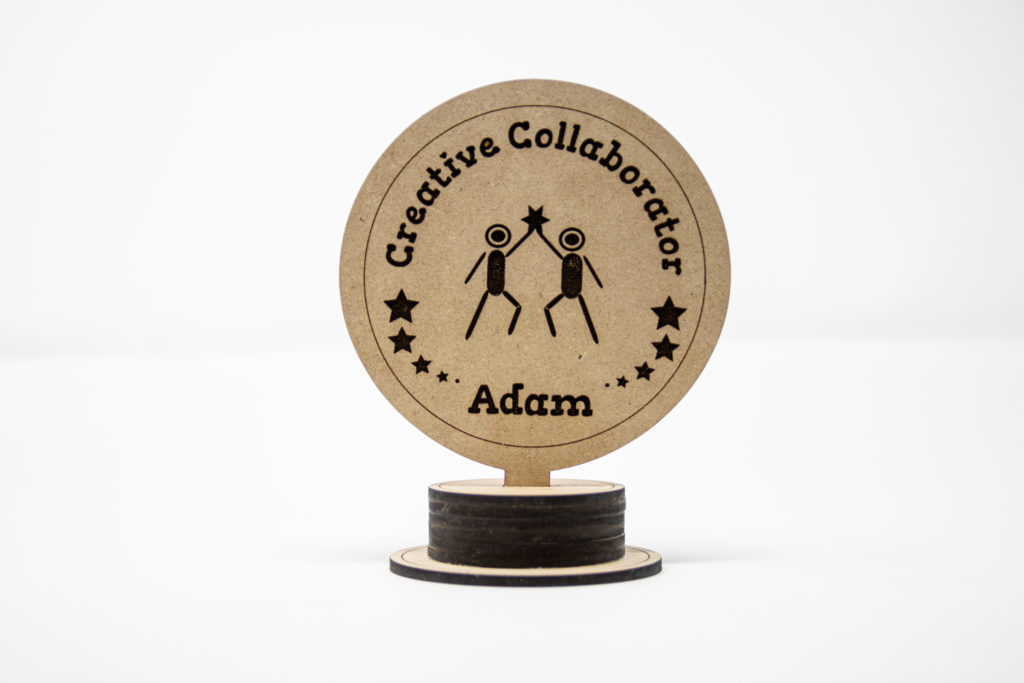
Grade Level
K, 1, 2, 3, 4, 5, 6, 7, 8, 9, 10, 11, and 12
Difficulty
Easy
Duration
30 minutes
Subjects
Art
Fun
General
Student Gifts
Summer Camp
Teacher Gifts
-
Students leverage technology to take an active role in choosing, achieving, and demonstrating competency in their learning goals, informed by the learning sciences.
-
Students use a variety of technologies within a design process to identify and solve problems by creating new, useful or imaginative solutions.
-
– Asking Questions and Defining Problems
– Developing and Using Models
– Planning and Carrying Out Investigations
– Analyzing and Interpreting Data
– Using Mathematics and Computational Thinking
– Constructing Explanations and Designing Solutions
– Engaging in Argument from Evidence
– Obtaining, Evaluating, and Communicating Information
Vocab
Award
Recognition
Community
Contributions
Author
Glowforge
Licensing
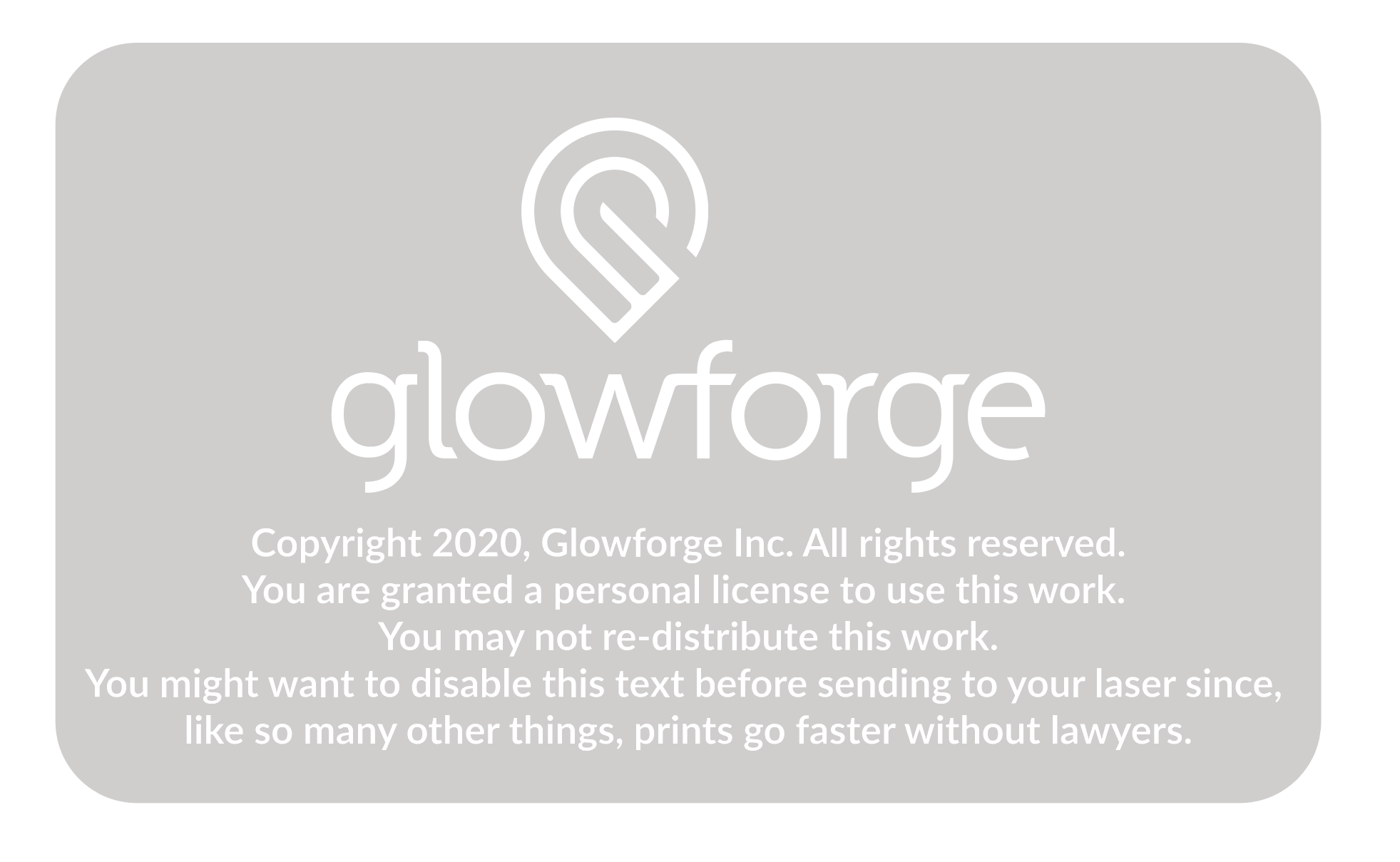
Lesson Handout
Overview
How can you strengthen your school community? Recognizing the achievements and hard work of community members can foster a culture of care and pride. In this activity, students will customize an award to recognize someone’s hard work. This can be a classmate, a teacher, or perhaps an often-overlooked member of the school community, such as an administrative assistant, a member of the custodial staff, or a cafeteria worker. Grow a greater sense of unity by recognizing the achievements of those around you!
Objective
Students will…Thematic Questions:
Outcomes:
Standards:
ISTE Standards for Students
NGSS Science & Engineering Practices
Supplies
For each award you will need:
- 1x Thick draftboard
- Glue
- Optional: Sticky notes
- Optional: Poster paper
- Optional: Paint or craft items to decorate finished designs
Catalog Designs
Description
Lesson Outline:
Get Ready:
- Read through the activity details to review the steps for completing the activity.
- Open the Hall of Fame Trophy design in the Glowforge app. Note that there are 2 prints associated with this design. Refer to the key below:
- Print 1 – (1. Thick Plywood) Hall of Fame Trophy
- Not used: Print 2 – (2. Veneer) Hall of Fame Trophy
- Change out the plywood material for Thick Draftboard material so students can customize the award with paint and other crafting items.
- Gather all of the materials needed to print the designs.
- Decide the criteria for recognition. Will students recognize each other, another class, school community members, or volunteers?
- Consider printing an example award for your students to help them visualize the size and shape of the design.
Production Time:
Print – 5 minutes Assemble – 15 minutes
Rubric:
Use this optional rubric for student self-reflection or formative feedback throughout the Student Designed Awards experience. 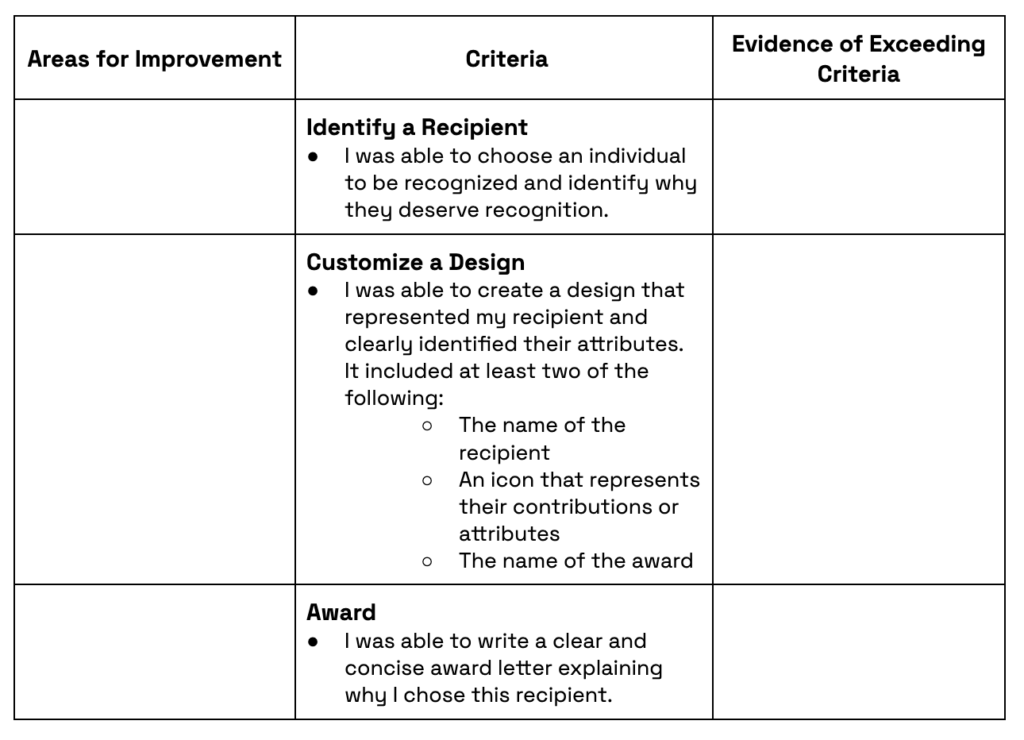
Lesson Instructions
Section 1 – Plan:
- Have students brainstorm the types of awards people receive as recognition. These awards might be given for having a special talent, achieving academic success, demonstrating physical ability, or for a heroic act.
- Ask: “What types of traits do these people possess?” Encourage students to consider traits like perseverance, patience, passion, drive, focus, determination, or even actions like empathy, altruism, bravery, or selflessness.
- Record the traits students identify on chart paper or on a whiteboard. If students get stuck, ask them what traits a specific hero, like a firefighter, possesses.
- Have students think about people in the school community that possess traits from the brainstorming session. Record their recommendations on the whiteboard or on poster paper.
- If students have not recognized unsung heroes in the school community, guide them to think about people who do things for the community that might be overlooked. For example, ask:
- How do the administrative assistants, custodial staff, or cafeteria workers make our community better? How do they go above and beyond to serve everyone?
- Who helps without being asked?
- Who is almost always cheerful even when times are tough?
- Break students up into smaller groups of 2-3. Tell students they are now on an awards committee! The committee’s job is to recognize a school community member who has done something significant to improve the community. Ask each group to pick a nominee from the recommendation list.
- Ask each group to write an award letter to their recipient explaining why they are receiving an award. Encourage groups to include information such as:
- What specific thing(s) did the person do?
- How did the person accomplish it?
- What were the results or the impact of the person’s actions? Explain why this made a difference to you.
- Highlight any “above and beyond” actions taken by this person.
- What qualities does the individual possess that inspire others?
- Give students a copy of the Student Designed Awards handout. Have them select one of the design shapes for their award. Students can plan their design on this handout or use it to upload custom artwork using the Trace and Print tool.

Section 2 – Customize and Create:
- Open Print 1 in the Glowforge app. Select the design from the choices. Drag the other design options outside the printable area so only the chosen design prints. See Step 1 in the print instructions in the Glowforge app for more information.
- Select the Plus + button to add text to the design. Students can add the name of the recipient or the name of the award to the design.
- Use the Plus + button to choose graphics from the Artwork library.
- If using the Trace and Print tool to customize, use the Plus + button and select Trace to select student artwork. Follow on-screen directions to resize the design onto the award outline.
- Before printing the final award, print a test print of the customized design first on cardboard. Just remember that if the design uses joinery such as slots or finger joints, these may need to be adjusted to suit the prototyping materials. Check that the text and icon are clear and legible. Resizing or changes to text and graphics may need to happen before the final print.
- Print the finalized Print 1 file on draftboard material.
- Customize the award with paint, markers, or other craft materials. Then use the directions in the Glowforge app to assemble its pieces.
Section 3 – Use:
- Organize an awards ceremony. Invite all the people receiving awards.
- Have students distribute the awards and read their letters to their recipients.
Reflection Questions:
Help students consider…
- What did you learn about the person you recognized? Did anything surprise you?
- What feelings did you have when you gave your award to your recipient? What feelings did they have? Were they surprised, modest, excited?
- What challenges did you run into creating your design? How might you design differently in the future?
Pro Tips:
- Use paint pens to carefully fill in engraved areas of the award after it is painted to make the text and images stand out!
- Opt to use the full catalog print including Print 2 with the veneer for a more polished finish. Remember that finished surfaces can’t be painted.
- If creating prototypes prior to doing final prints, use cardboard for test prints. Just remember that if their design uses joinery such as slots or finger joints, these may need to be adjusted to suit their prototyping materials.
- To elevate the design and make the award even more unique, consider creating a new top for the award in a custom shape. The guides on how to create a custom gift tag and plant stakes will be helpful for this. Remember to include a way to connect your custom award top to your award base.
Reimagine:
- How might we celebrate students’ roles within the classroom? Use trophies to recognize classroom leadership roles such as line leader, messenger, library helper, or technology assistant. Students can keep the trophies on their desks during the week that they perform the leadership role..
- How can we recognize our classmates at the end of the year? Have students create a list of superlatives and vote on the ones they’d like to assign to classmates. Then, students can design awards for each superlative and recipient.. Encourage students to stick to positive character traits and actions and to avoid critical accolades or superlatives that poke fun at others.
- How could we recognize educators who have influenced and inspired us? Have students identify the most influential person in their school career. Students can customize an award for that educator and write a letter telling them how they impacted their education. Have students distribute the awards at the end of the year.
Remix:
- Customize the award and use it as a game piece on a game board or an award for the winner. Consider using the awards as an add-on with the Customized Games activity!
- Create friendly competition in the classroom between teams or different class periods. Examples of friendly competition might be most time spent reading for pleasure, quickest line up after recess, or meeting fundraising goals. The winning team or class period can get bragging rights and maybe a special prize!
Meet Glowforge
The magical 3D laser printer that made this lesson possible. Learn more!

